Whether you live in the tropics or are experiencing a heat wave in your climate, maintaining summer vegetable gardens can be challenging if you've chosen plants that prefer mild temperatures. These herbs and veggies, however, thrive in hot temperatures and grow so fast that you'll barely be able to keep up. Here's how to grow them, and even a few ways to include them in your meals.
There's still time in July to get these going in your own home garden with healthy transplants from the garden center. Or if your current plants are struggling from a heat wave, consider one of these for your next summer crop.
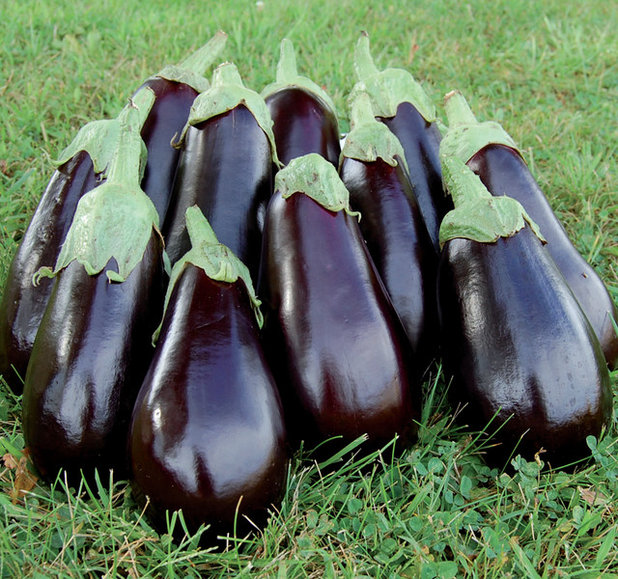
seedsavers.org
Eggplant(
Solanum melongena)
Eggplant is one of the most heat-tolerant vegetables around; it shouldn't even be planted outside until the temperature reaches 70 degrees. Once they've been treated to lots of heat and water, though, stand back and watch them rocket up, with huge leaves and glossy fruits ranging from small egg-shaped ones to narrow Japanese varieties and big marbled lavender types. 'Black Beauty' is the old favorite, but keep your eyes peeled for the violet and white 'Blue Marble' or the neon-pink variety that's appropriately called 'Neon'.
Where it will grow: Annual in all climates
Water and soil requirements: Well-drained soil and constant moisture
Light requirement: Full sun
Mature size: 2 to 3 feet tall
Planting tips: Space eggplant transplants 2 to 3 feet apart, providing stakes to support the heavy fruits. Feed with a balanced fertilizer according to label instructions before planting and continue to lightly fertilize throughout the growing season. Harvest ripe eggplants before the glossy skin dulls to a matte finish.
See how to grow eggplant
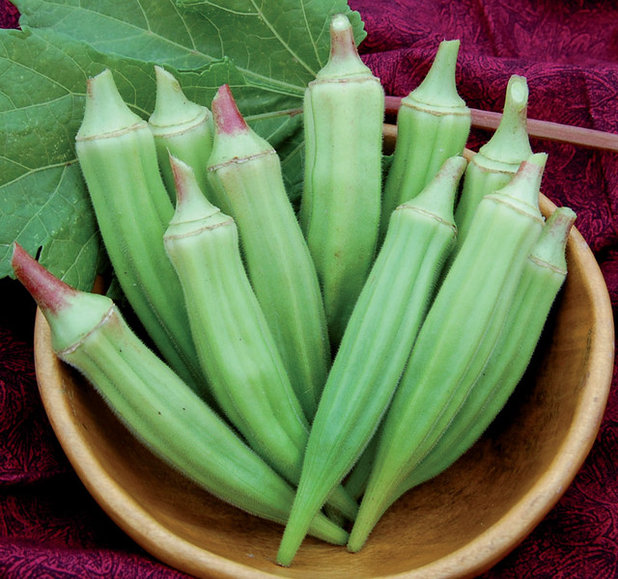 Okra
Okra(
Abelmoschus esculentus)
It would be a shame to be a Southerner who hates okra, because there are few vegetables easier to grow than this tasty hibiscus relative. If you're not a fan of classic Southern fried okra or stewed okra and tomatoes, try eating the seed pods fresh, dried or sautéed. Though they can be slimy if cooked without high heat or an acidic element like lemon juice or tomato sauce, okra is tasty enough to be considered something of a southern caviar.
Where it will grow: Annual in all climates
Water and soil requirements: Tolerant of drought but needs regular watering to get established
Light requirement: Full sun
Mature size: 6 feet tall
Planting tips: Space okra plants 3 to 4 feet apart, as they become quite large. Remove the pods when they reach finger length, since nearly mature pods become stringy and tough. Okra plants will stop producing if the pods are left to mature, so keep harvesting every two or three days until the end of the season and find some good recipes to put them to use.
See how to grow okra
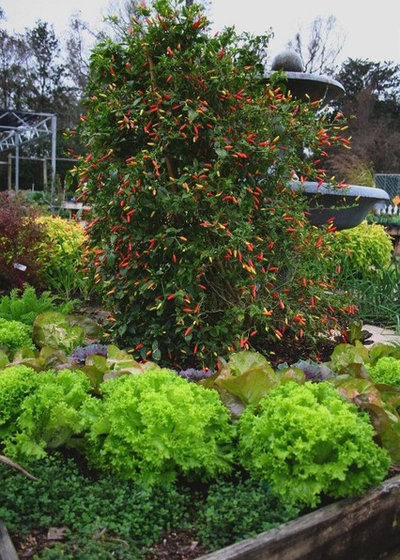 Peppers
Peppers(
Capsicum annum)
Isn't it fitting that peppers prefer the heat? In fact, the spicier and smaller ones seem to do even better in summer than the larger bell peppers, producing enough spiciness on one plant to set the world on fire. That might be an exaggeration, but a well-grown pepper plant will produce a lot of flavor. Habanero peppers and a few others are best left to the daredevils, but Thai chilies and cayenne peppers can add color to dishes without putting you into the emergency room.
Where it will grow: Annual in all climates
Water and soil requirements: Regular water, well-drained soil
Light requirement: Full sun
Mature size: 1 to 4 feet tall
Planting tips: Plant peppers 1 to 2 feet apart in well-drained soil. Water deeply after planting and fertilize once the plants have become established. Harvest bell peppers at any time or leave them on the plant to sweeten until they turn red. Pick hot peppers with gloves and pruning shears after they’ve ripened to a deep orange or red.
See how to grow peppers
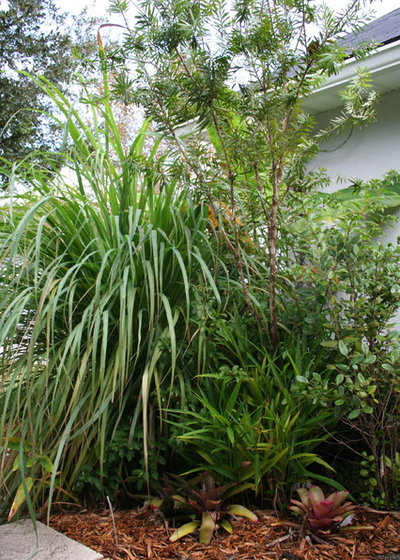 Lemongrass
Lemongrass(
Cymbopogon citratus)
Lemongrass leaf bases are essential to many Southeast Asian dishes, and the leaves can be knotted up and steeped for tea — or added to soups and removed in a similar fashion to bay leaves. Cats also seem to like it and can be found flossing their little feline teeth occasionally, hopefully freshening their breath in the process.
Apart from those nifty uses, grow lemongrass because it's beautiful. Few ornamental grasses have such an architectural presence in the garden, and it even lives through the winter as a perennial in warmer climates.
Where it will grow: Annual in all climates; hardy to 25 degrees Fahrenheit (USDA climate zones 9 to 11; find your zone)
Water and soil requirements: Drought tolerant but loves extra water
Light requirement: Partial to full sun
Mature size: 3 to 5 feet tall
Planting tips: Lemongrass is a pretty easy plant to grow and will even thrive in sandy soil. Plant divisions or transplants in well-drained soil with a stake for support. Harvest throughout the year wearing gloves, as the leaves can be quite sharp.
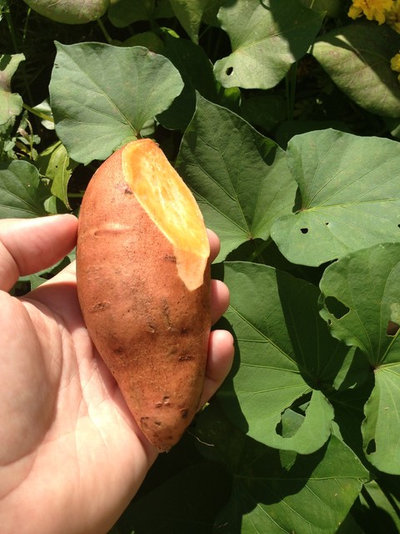 Sweet Potato
Sweet Potato(
Ipomoea batatas)
Sweet potato has a few tricks up its sleeve, both as an edible and as an ornamental. You may have had them baked with butter and marshmallows or used them to make sweet potato fries, but you haven't lived until you've had sweet potatoes in stews or curries. You may have also used one of the ornamental varieties like the chartreuse 'Marguerite' in your garden or container plantings, but why grow that when you can grow the edible kind as an ornamental instead? These are just a few ways to think outside the box with this amazing morning glory relative.
Where it will grow: Annual in all climates
Water and soil requirements: Tolerant of drought but needs regular watering to get established
Light requirement: Full sun
Mature size: 1 foot tall
Planting tips: Plant sweet potato ‘slips’ (small roots) in mounds of rich soil up to 3 feet apart, letting only the stems and leaves show above the ground. Harvest sweet potatoes at any time or wait until the top growth becomes yellowed at the end of the season for the largest roots. Rotate sweet potatoes with other crops each year so that pests and diseases don’t congregate and become a problem.
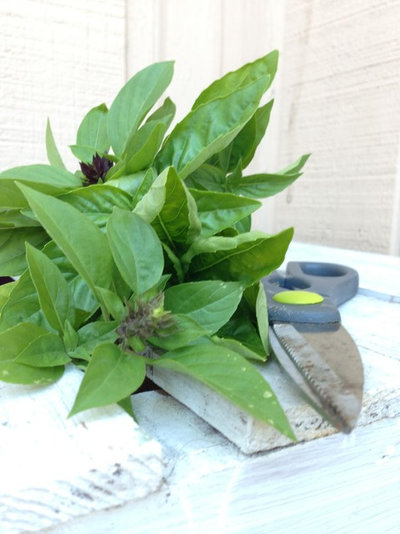 Basil
Basil(
Ocimum basilicum)
Basil has found its way into just about every cuisine in warm climates around the world, but most are familiar with one in particular that is a crucial ingredient in pesto, pizzas and spaghetti sauce. Sweet basil is the common type used in most European cooking, but be sure to give some of the ornamental, not to mention tasty, varieties a try. Purple basil has attractive deep purple leaves; spicy globe basil has tiny leaves and a tight form like boxwood. Thai basil, holy basil and African blue basil lend their strong flavors to many dishes around the world.
Where it will grow: Annual in all climates
Water and soil requirements: Regular moisture, well-drained soil
Light requirement: Full sun
Mature size: 1 foot to 2½ feet tall
Planting tips: Basil grows very quickly from seed and should be pruned or harvested often for a bushy habit. It doesn't need too much fertilizer (twice should be enough) if planted in rich soil, but yellowed and weak plants might need a little more. More about growing basil
More: How to Grow Your Own Sweet Summer Crops





